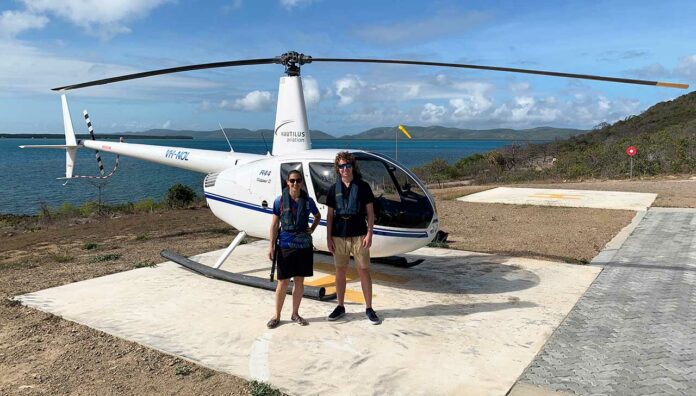
It can be tough attracting colleagues away from city lifestyles, but there’s more to be found ‘out there’, as these pharmacists have discovered.
Carli Berrill MPS had only a vague idea of where Thursday Island was when she signed up for 12 months as a locum pharmacist 11 years ago.
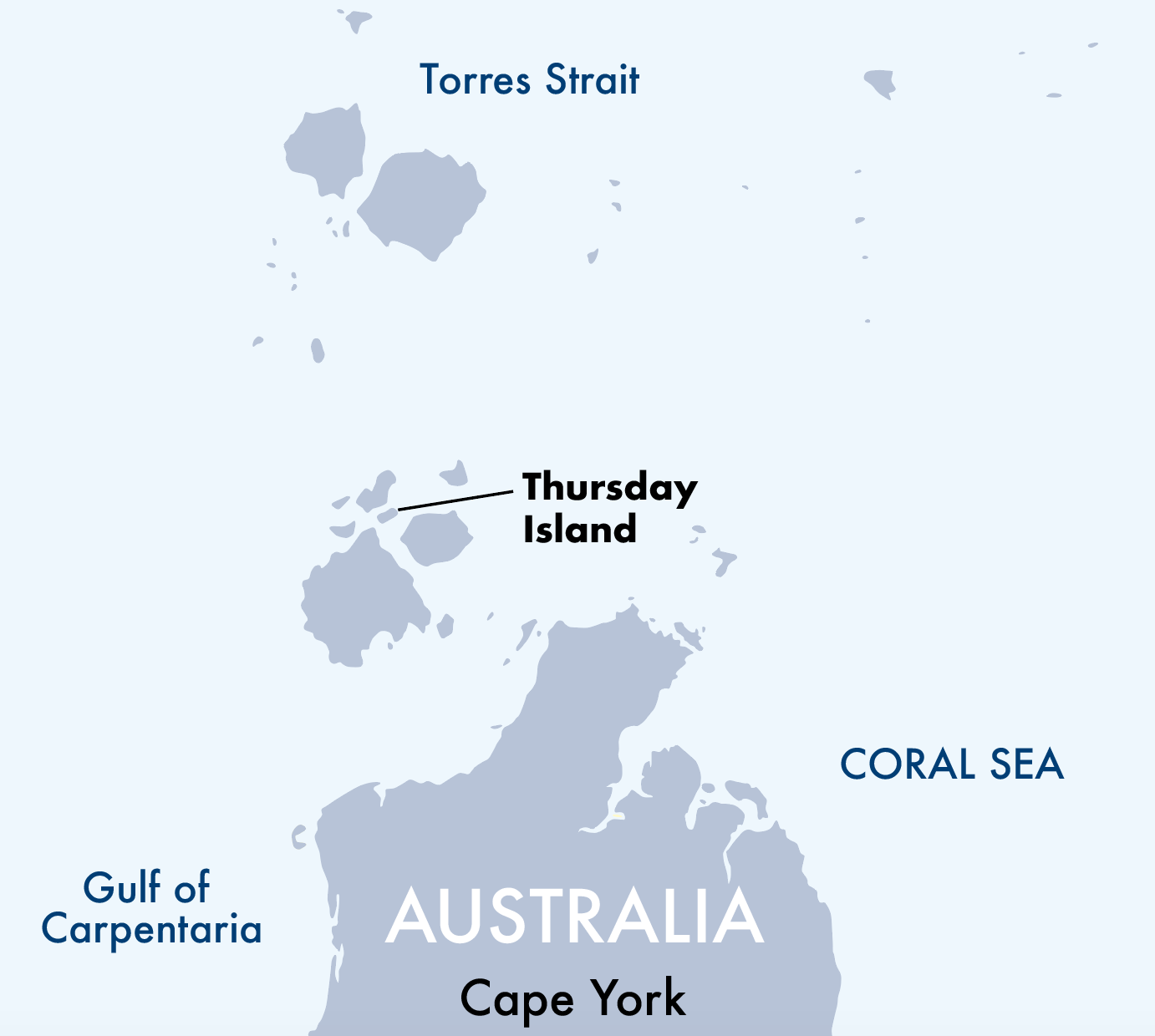 Just as the contract was finishing, Mrs Berrill met her future husband. Today she’s a mother of two toddlers, a homeowner and co-owner of Thursday Island Pharmacy in the Torres Strait Islands. The pharmacy services more than 3,000 people on Thursday Island and supports Aboriginal health centres on 14 other islands, which the pharmacists visit twice a year by helicopter.
Just as the contract was finishing, Mrs Berrill met her future husband. Today she’s a mother of two toddlers, a homeowner and co-owner of Thursday Island Pharmacy in the Torres Strait Islands. The pharmacy services more than 3,000 people on Thursday Island and supports Aboriginal health centres on 14 other islands, which the pharmacists visit twice a year by helicopter.
‘Some days you go to work on a chopper, flying over the Torres Strait; you see turtles, dugongs, sharks,’ Mrs Berrill says.
But recruitment and retention of pharmacists is difficult, despite the pharmacy paying above-award salaries, providing accommodation and a car, and ensuring pharmacists have a holiday every 3 months.
Mrs Berrill is also co-owner of Bamaga Pharmacy on Cape York, and both pharmacies are constantly recruiting.
Rural and remote pharmacists account for around 8% of the Australian pharmacist workforce of 34,580 practitioners. The number of pharmacists per 100,000 people ranges from 56.1 in small towns, to 77.4 in remote locations and 101 in cities.
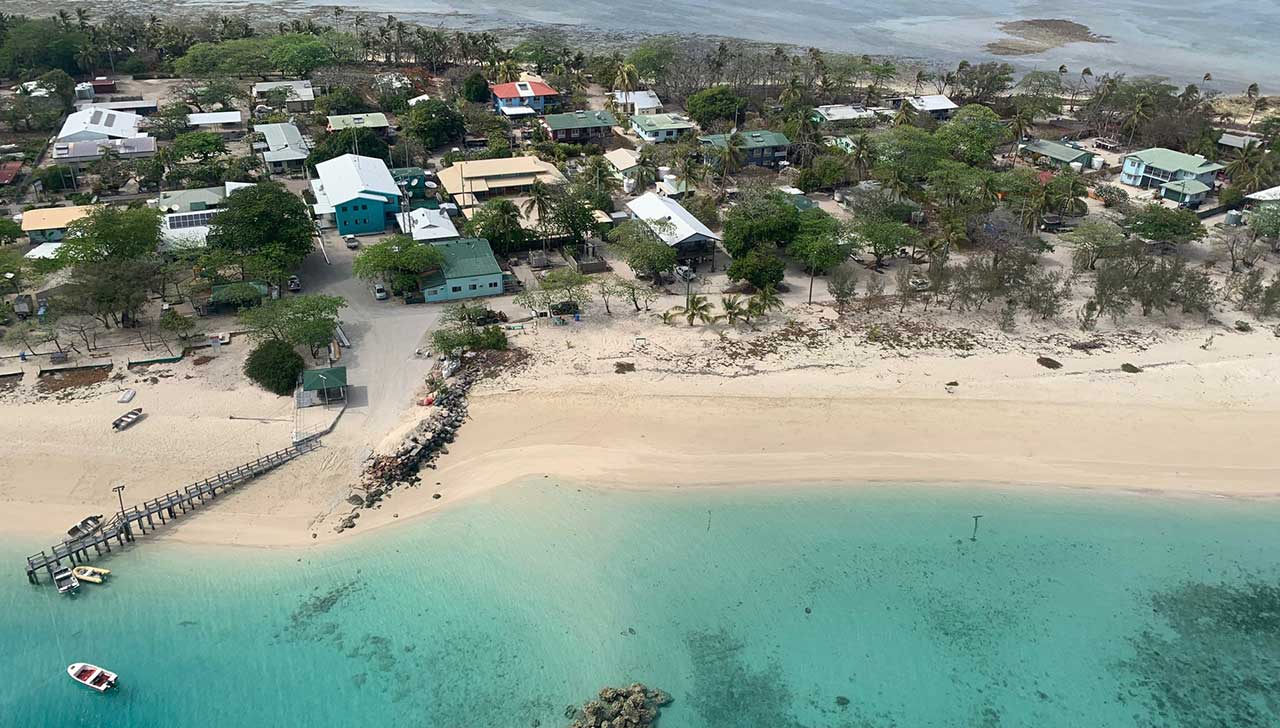
Research by University of Tasmania lecturer and community pharmacist Mark Kirschbaum MPS found that rural exposure – either a rural background or a rural clinical placement – is a key predictor of pharmacy students’ interest in working in rural areas after graduation. Rural clinical placements often lead students unfamiliar with small towns to have ‘an epiphany and a change in understanding of what it’s like to be in a rural setting’, he says.
‘It’s that foundational knowledge students need, so they are not fearful of the bush but see rural pharmacy as an opportunity to expand their practice. The fact that we have a maldistribution of pharmacists suggests it’s not just about money, because wages and
working conditions are generally better in rural practice.’
Raven’s Recruitment Pharmacy Salary and Market Report 2020 reveals the pay gap, with rural and remote pharmacists earning an annual salary of $82,000 (Victoria) to $101,000 (Queensland) compared with a metropolitan range of $65,000 (Perth) to $84,000 (Sydney).
Ken McCarthy MPS, owner of Terry White Ceduna on the west coast of South Australia, had difficulty recruiting a pharmacist for more than 6 months.
He eventually found one through a recruitment agency but generally finds that word of mouth around his networks works best. ‘For pharmacists from the city, it can be a big push to move somewhere unfamiliar, Mr McCarthy says.
‘There’s not as many services, so you need to be a bit self-sufficient, but the benefits are the community and the rapport with healthcare providers … it’s the place to be.’
Recruitment in the Northern Territory is difficult, and with Charles Darwin University no longer enrolling pharmacy students, the workforce is dependent on interstate recruitment. While finding pharmacists to work in Darwin is a struggle, finding them for pharmacies just 20–30 minutes drive outside the city ‘is even more problematic,’ says NT pharmacist Sam Keitaanpaa MPS.
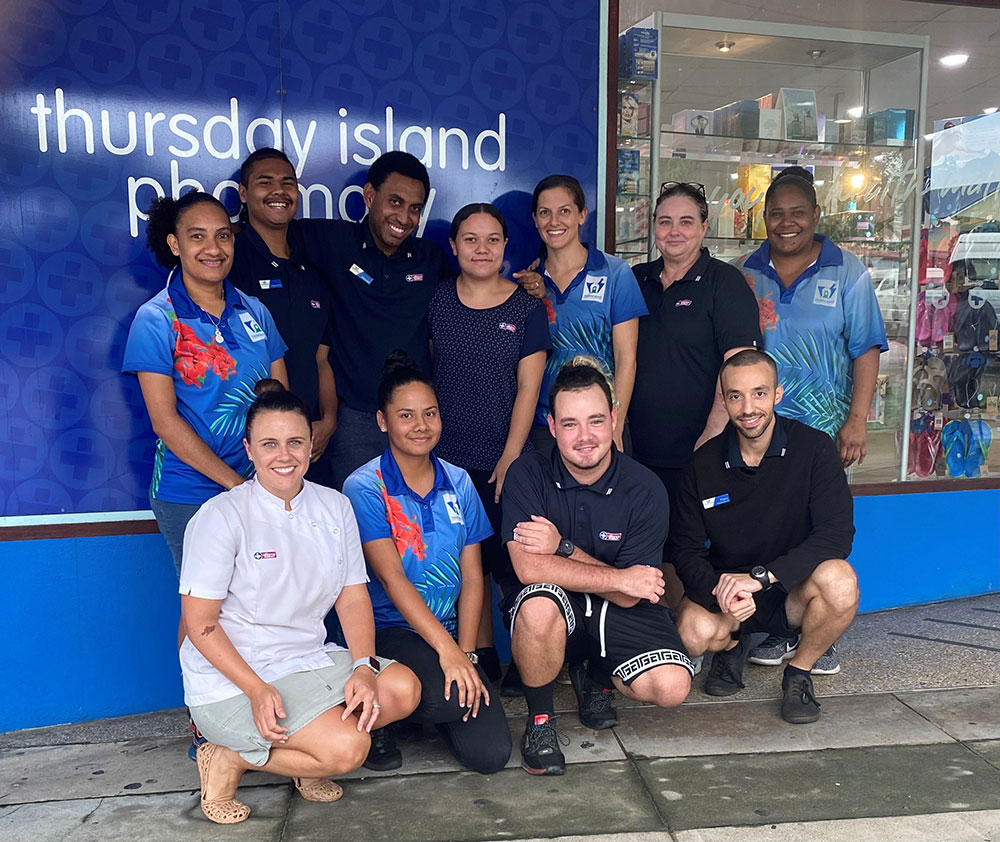
PSA SA/NT President Robyn Johns MPS says visa benefits ’are a major facilitator for recruitment of overseas-born or trained pharmacists’. And in Alice Springs, a shared house is provided while other owners directly subsidise rents, she says.
Mrs Berrill uses recruitment agencies, domestic and international, and promotes the professional benefits of remote pharmacy wherever she can at conferences and to universities, even taking along photos. She asks prospective employees about their partner’s occupation ‘because if the partner can get a job, it can lead to a longer commitment to stay’.
The most successful recruitment follows pharmacists, interns, university or school students having exposure to the pharmacy.
One local success is Torres Strait Islander Taylor Wall-Takai, 19, who came to the pharmacy for work experience, was employed as a junior, and trained as a pharmacy technician. This year she enrolled in pharmacy at James Cook University.
‘My dream is that Taylor goes to uni, comes back and becomes involved in the business, and I’m hoping more local people will follow her path,’ Mrs Berrill says.
FIGURE 1 – Key areas to resolve under-supply of pharmacists1
|
PERSONAL CHARACTERISTICS Personal characteristics providing a good fit for rural and remote practice:
|
WORKSITE CHARACTERISTICS
Worksite factors that promote retention in rural and remote areas:
|
FEATURES OF RURAL AND REMOTE PRACTICE THAT SUPPORT RETENTION
Pharmacist recruitment and retention are linked to:
|
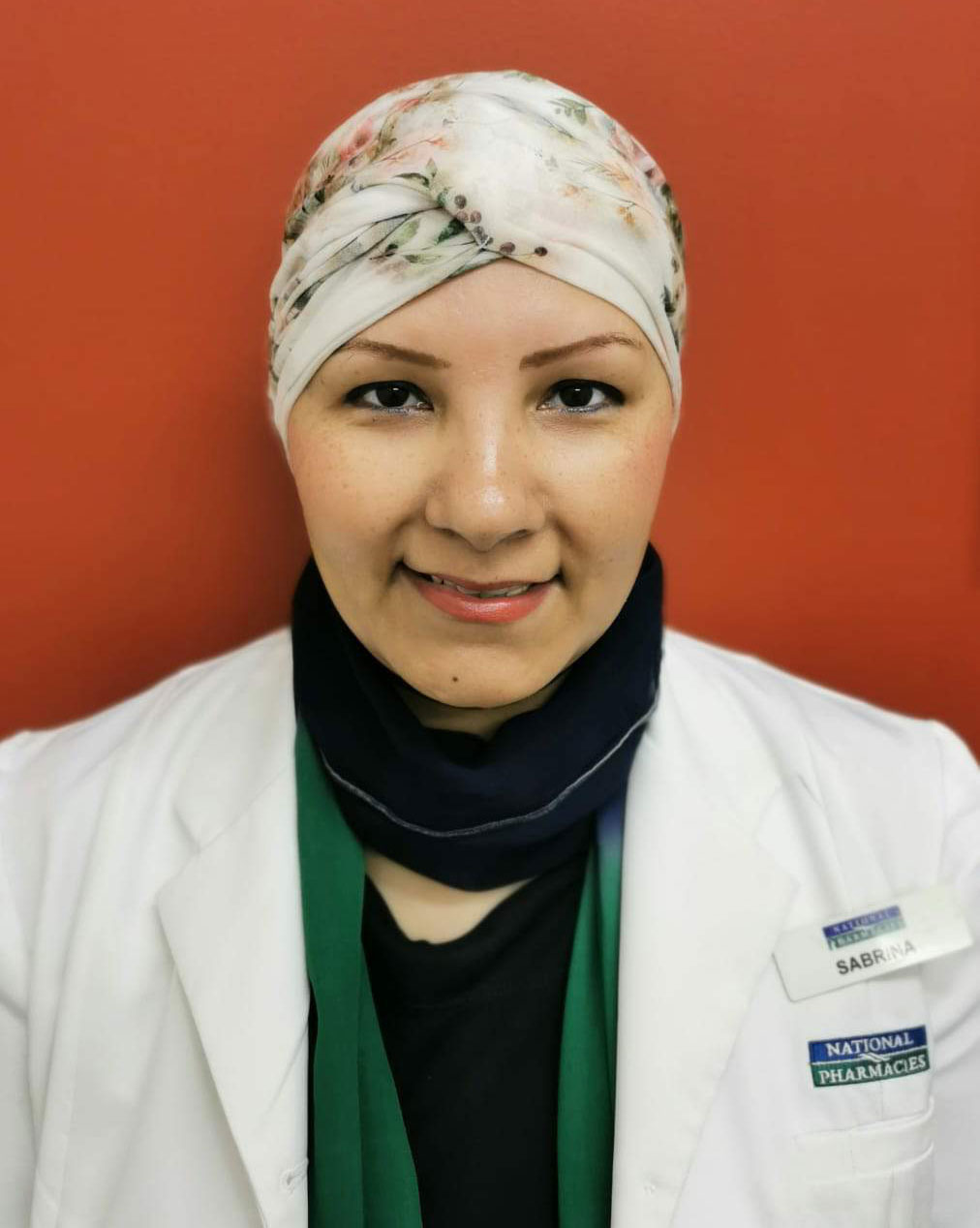
SABRINA IMRAN MPS
Pharmacist-in-charge, National Pharmacies, Port Pirie, SA
The warm welcome from the Port Pirie community was the reason Sabrina Imran MPS made the South Australian regional city her home, after arriving from Pakistan with her family 12 years ago.
‘In no time at all we experienced the friendliness and acceptance of our community, so we decided to stay.’It can be tough attracting colleagues away from city lifestyles, but there’s more to be found ‘out there’, as these pharmacists discovered.
Mrs Imran, pharmacist-in-charge of National Pharmacies Port Pirie, says her consumers in the seaport of 14,000 people have become like family and friends, often just popping into the store to say hello.
‘They come to see you with their health concerns, but they are more than comfortable to also discuss their personal and family issues,’ she says.
‘So, this trust and love for their local community pharmacist is something I enjoy and value the most.’
Mrs Imran has never had a problem recruiting pharmacists to Port Pirie. Her pharmacy offers attractive salaries and working conditions and is part of the larger corporate group, which has 38 pharmacies in South Australia and ‘a reputation for looking after its people’.
‘We have a strong intern placement program, and interns offered jobs with us gladly take them up,’ she says.
‘After a year of working and learning with us, they become accustomed to the work environment, staff and customers.’
The pharmacy group also assesses university clinical placement students, encourages promising students to apply for intern positions, and advertises pharmacist’s jobs on its website.
Mrs Imran is also a diabetes educator and has three children with her pharmacist husband.
‘The main barrier to regional pharmacy recruitment is that young pharmacists don’t seem to want to give up the city life, and they are not compensated enough to leave the luxuries of the city,’ Mrs Imran says.
‘My message to any pharmacist is venture out and try it.
‘You can fast-track your career and experience new ways that you may very well prefer.’
 COURTNEY MCMAHON MPS
COURTNEY MCMAHON MPS
Co-owner Biloela Discount Chemist and Biloela Medical Centre Pharmacy, Biloela, QLD
Courtney McMahon was 24 when she bought into her first pharmacy in her hometown of Biloela, and a year later she was a partner in a second pharmacy in the central Queensland town of 6,000 people.
Her connection to the first pharmacy began 10 years earlier when she landed a job as a schoolgirl junior and continued working there through university holidays, mentored by two previous owners.
‘It’s really strange and wonderful to think that connections I made when I was 14 made it possible for me to make big strides very early in my career.’
Now 29, Ms McMahon is in partnership with three pharmacists and co-owns Biloela Discount Chemist and Biloela Medical Centre Pharmacy.
Pharmacist recruitment is now stable with three pharmacists – including one business partner – moving to Biloela in the past year. The other two pharmacists relocated to be with their partners.
‘Until then, we weren’t having any success recruiting, so if you wanted a holiday, one of the pharmacists [business partners] would have to come up from Brisbane or we’d have to pay for a locum.’
Ms McMahon says a big attraction of rural pharmacy is the work-life balance, but she’s always realistic in her sales pitch to prospective employees.
‘Community pharmacy is really challenging anywhere, so I’m always honest about that.
‘But the more we can recruit, the more we can really manage that work-life balance,’ she says.
The social and sporting life of country towns is another attraction, and as Secretary of the Biloela Chamber of Commerce, Ms McMahon says there’s ‘always something going on’, from spring fairs and fishing competitions, to musters and music fairs.
‘And there’s no commute. Kids still walk to school and ride their bikes around the streets,’ she says. ‘There’s just no worries.’
Recommended recruitment strategies
- Country pharmacists recommend an attractive salary or hourly rate, and accommodation and car incentives.
- Promote pathways into pharmacy with offers of school student work experience and clinical placements to university students.
- Promote lifestyle and professional benefits at every opportunity – conferences, via social media, and by sharing positive pharmacy work stories, e.g. on PSA’s ECP Facebook page.
- When pharmacists decide to relocate, inquire about opportunities and support for their partners.
- Ensure full use of government allowances and scholarships for rural and remote pharmacy, including allowances for intern incentives, training, workforce programs, the $10,000 a year Rural Pharmacy Scholarship Scheme ($15,000 for Aboriginal and Torres Strait Islander students).
- Contact universities to explore options to take more students on rural clinical placements for a minimum of 4–6 weeks.
References
- Obamiro KO, Tesfaye WH, Barnet T. Strategies to increase the pharmacist workforce in rural and remote Australia: a scoping review. Rural Remote Health 2020;20(4):5741.
- Lim R, Bereznicki L, Corlis M, et al. Reducing medicine-induced deterioration and adverse reactions (ReMInDAR) trial: study protocol for a randomised controlled trial in residential aged-care facilities assessing frailty as the primary outcome. BMJ Open 2020;10(4):e032851.



 John Jones MPS, pharmacist immuniser and owner of My Community Pharmacy Shortland in Newcastle, NSW[/caption]
John Jones MPS, pharmacist immuniser and owner of My Community Pharmacy Shortland in Newcastle, NSW[/caption]


 Debbie Rigby FPS explaining how to correctly use different inhaler devices[/caption]
Debbie Rigby FPS explaining how to correctly use different inhaler devices[/caption]




 Professor Sepehr Shakib[/caption]
Professor Sepehr Shakib[/caption]

 Lee McLennan MPS[/caption]
Lee McLennan MPS[/caption]
 Dr Natalie Soulsby FPS, Adv Prac Pharm[/caption]
Dr Natalie Soulsby FPS, Adv Prac Pharm[/caption]
 Joanne Gross MPS[/caption]
Joanne Gross MPS[/caption]




